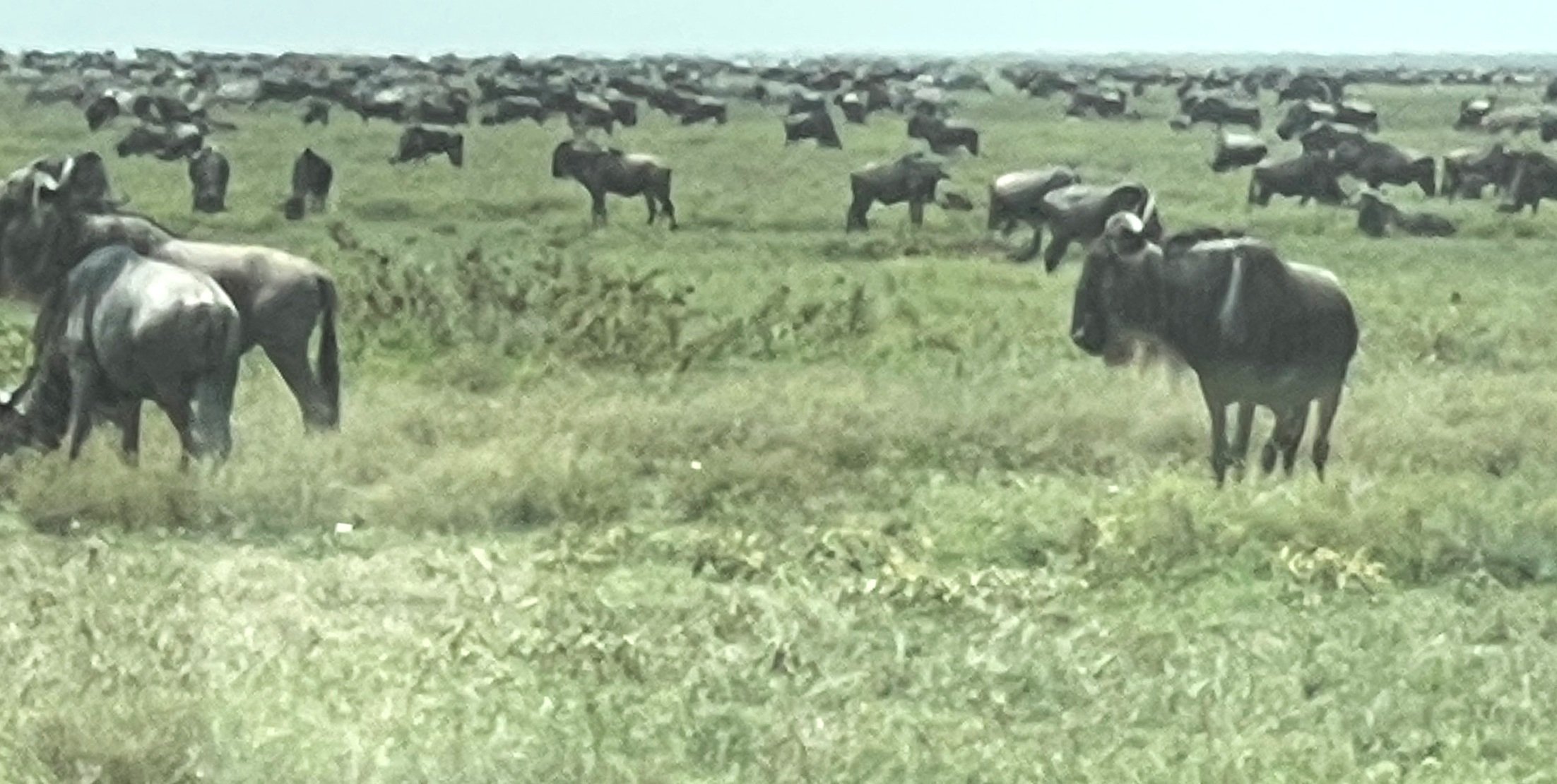The End of the Trail, the Serengeti
We left the Ngorongoro Crater after a fabulous breakfast on February 16 and spent the next 11 hours in our land cruisers.
We had learned there was a vast herd migration, and we made the choice to enjoy boxed lunches in the land cruisers rather than drive directly to our lodge to check in and enjoy a sit-down lunch. It was grueling, and totally worth it.
Let’s talk again about the roads. I bet you are familiar with what we call “washboard” roads here in Oklahoma. Well, that’s what we drove on for hours to the Serengeti. I don’t know how there is a bolt left intact on that land cruiser. We shook our way down from the crater, seeing many giraffes and their babies, as well as other wildlife.
We also passed many Maasai villages (a collection of round huts surrounded by a tall stick/post fence. The Maasai bring all of their livestock inside of that fence every night, and bring the baby animals into their homes.
We entered the Serengeti in one of the driest, most inhospitable areas we’d seen yet. Only Amboseli was dryer. Very little wildlife, a few Thompson and Grant gazelle’s. Very sparse vegetation. Not a tree in sight. If we had to slow down for a particularly rough spot the dust we were kicking up enveloped us. Our eyes and teeth were gritty.
But then, the magic. We made our way to Lake Elemeti and watched hundreds of Wildebeests crossing the river. Here’s the weird thing. They were on both sides of it and going back and forth. I asked our driver/guide why, and he said “for no particular reason”. There were several floating bodies in the river of those who couldn’t make it. There were many calves crying for their mothers on the banks, and mothers approaching them and turning away as they weren’t their own calves. Wildebeests do not nurse calves other than their own, so the future is bleak for those who can’t reunite.
There were the biggest birds of prey we had seen feasting on the animals who didn’t survive the ordeal. The banks were a literal bone yard of the hundreds who failed this test. There were pink flamingos in the millions, along the river banks, as far as the eye could see.
We followed the river and found a narrow area. We parked and cut the engine. A beautiful lioness walked over for a drink. I got a great shot of her, with the reflection of the clouds overhead in the water. Then, she did the unthinkable. She walked over to us, and just laid down beside our land cruiser, with her back to us. Do you think she was intimidated by us? Obviously not. Then her sister came down, drank, and laid down on the other side of the water. Again, we just sat there, watching them watch the wildebeests, and flick their tails.
We drove on, and topped a slight ridge in an area where the grass was thick, tall and green. First we saw three cheetahs, after what we believed to be a hare hiding in a bush.
But then, as we topped another slight rise in the land, there they were. Hundreds of thousands of wildebeests, zebras, the occasional hyena, wild dogs, and countless newborns of each.
We just stopped the engine and were mesmerized. We broke out the box lunches, and took it all in, along with sustenance.
And that was the first half of our first day on the Serengeti. More to follow. Much more.


